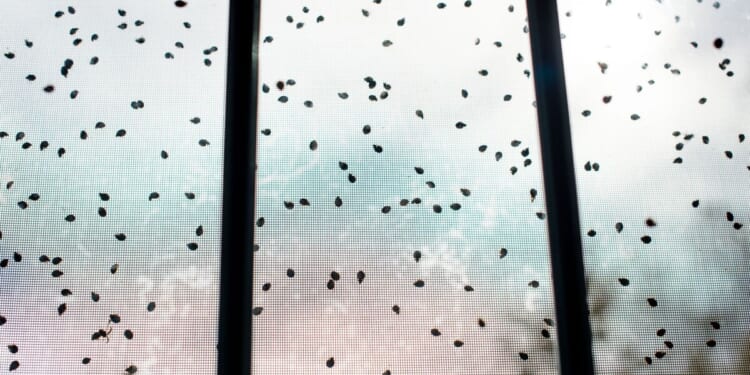Ladybirds have been spotted across the UK this week, with hundreds of people taking to social media to ask if it’s normal to see so many of them. Some households say they’ve been invaded by “swarms” of the tiny insects flying outside or gathering in clusters on their walls and window sills.
But experts say there’s no need to panic. The sudden surge is part of an annual migration, as ladybirds look for a warm place to settle for winter. Professor Helen Roy from the UK Centre for Ecology & Hydrology and the University of Exeter said: “Winter is a tough time for ladybirds in Britain and so during the winter months they become dormant.
“Each species has a favoured place to spend the winter – some such as harlequin ladybirds enter buildings while 7-spot ladybirds tuck themselves under leaf litter.
“On warm early October days many ladybirds will be seen flying around in search of a winter habitat,” she added when speaking to MEN.
And that often means homes with easy entry points. Max Barclay, Senior Curator of Beetles at the Natural History Museum, said in a blog post: “There are a number of species of ladybirds that hibernate in big clusters.
“Ancestrally harlequin ladybirds would probably have hibernated in big clusters in caves, hollow trees and other sheltered places.”
In modern times, loose windows and small gaps around homes offer the perfect alternative.
That’s where bay leaves come in. According to experts at How Stuff Works, natural repellents like bay leaves, whole cloves, and even citrus oil can help stop ladybirds from gathering indoors.
Just pop a few bay leaves on your window sills or make small pouches and place them in areas ladybirds tend to gather.
The experts said: “Bay leaves can be strategically placed in nooks and crannies, warding off these pesky invaders. You can make small pouches of bay leaves and place them around problem areas.”
They also recommend using light traps, dish soap sprays, and even duct tape if you need to remove them without touching them directly.
But despite the temptation to get rid of them fast, experts are urging people to avoid harming the insects.
The UK Centre for Ecology & Hydrology said in a blog post: “Perhaps gather them gently into a box and put them in an outbuilding if they are in the way but, otherwise, just leave them where they are if possible.”
Ladybirds, including the invasive harlequin species, play a role in natural pest control in gardens, especially during the spring and summer.
And while some types, like the Asian lady beetle, can bite or cause nuisance during colder months, they don’t pose a serious threat to humans.
Still, experts say it’s important to seal entry points like window frames and door gaps to prevent future swarms.

















